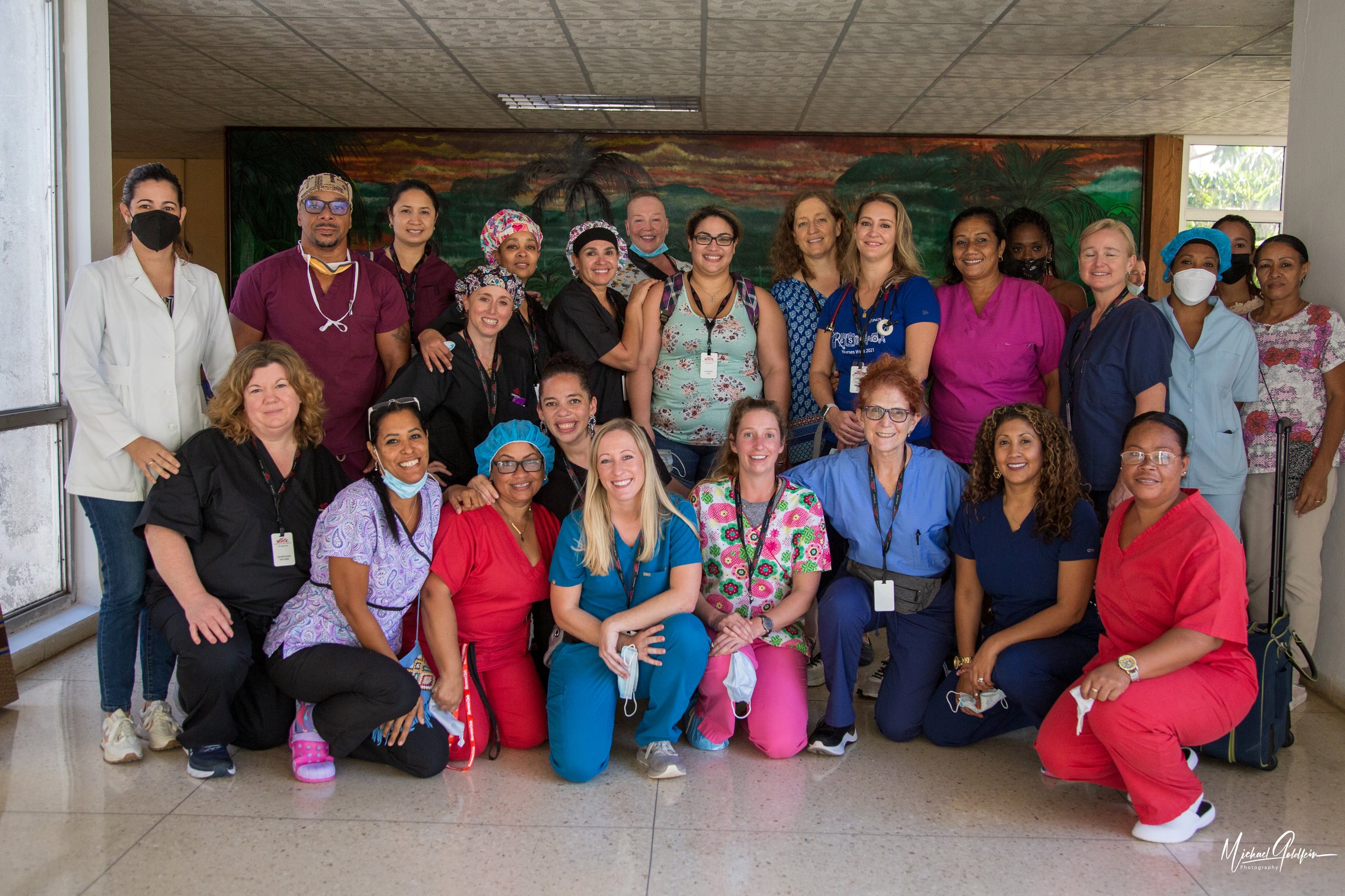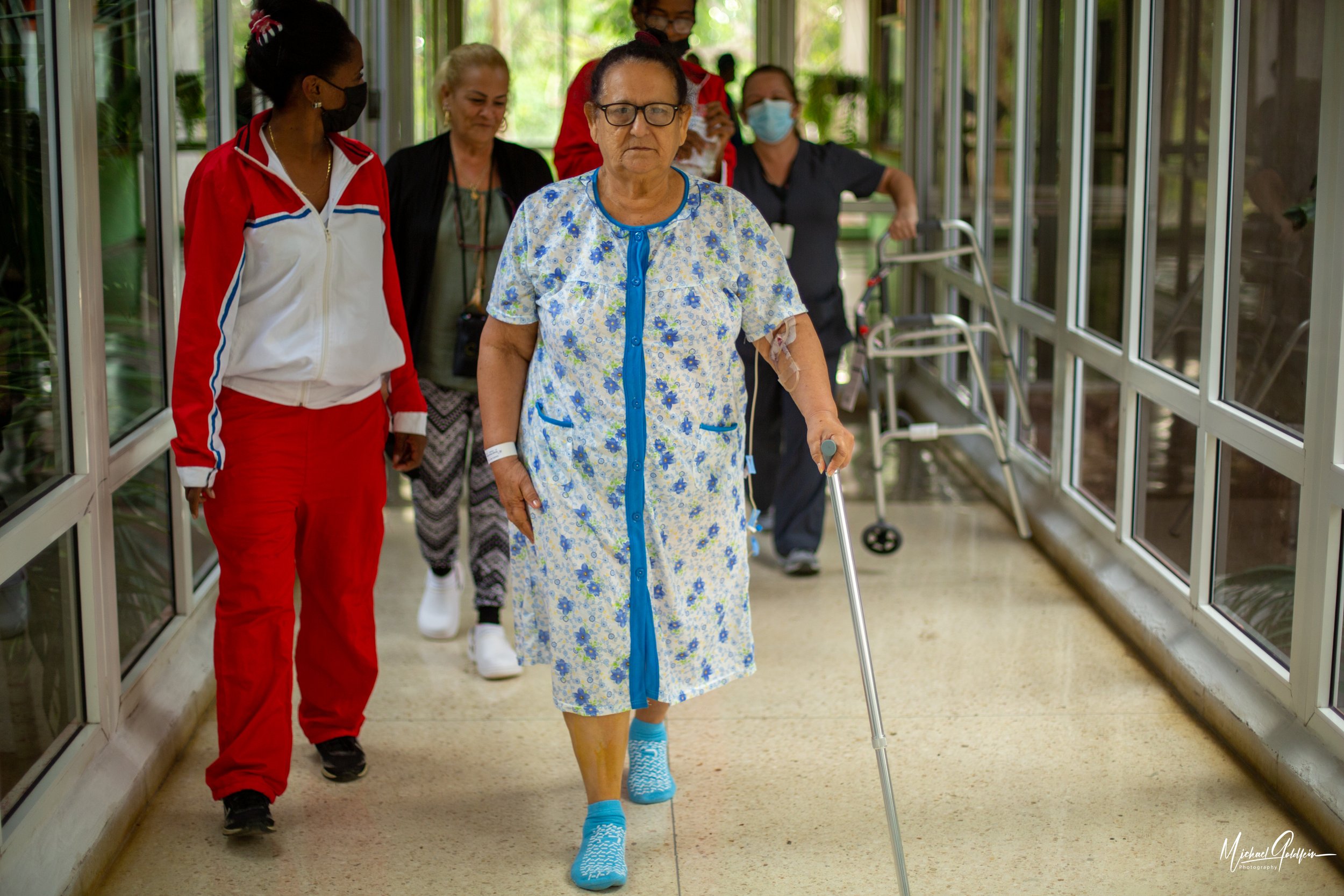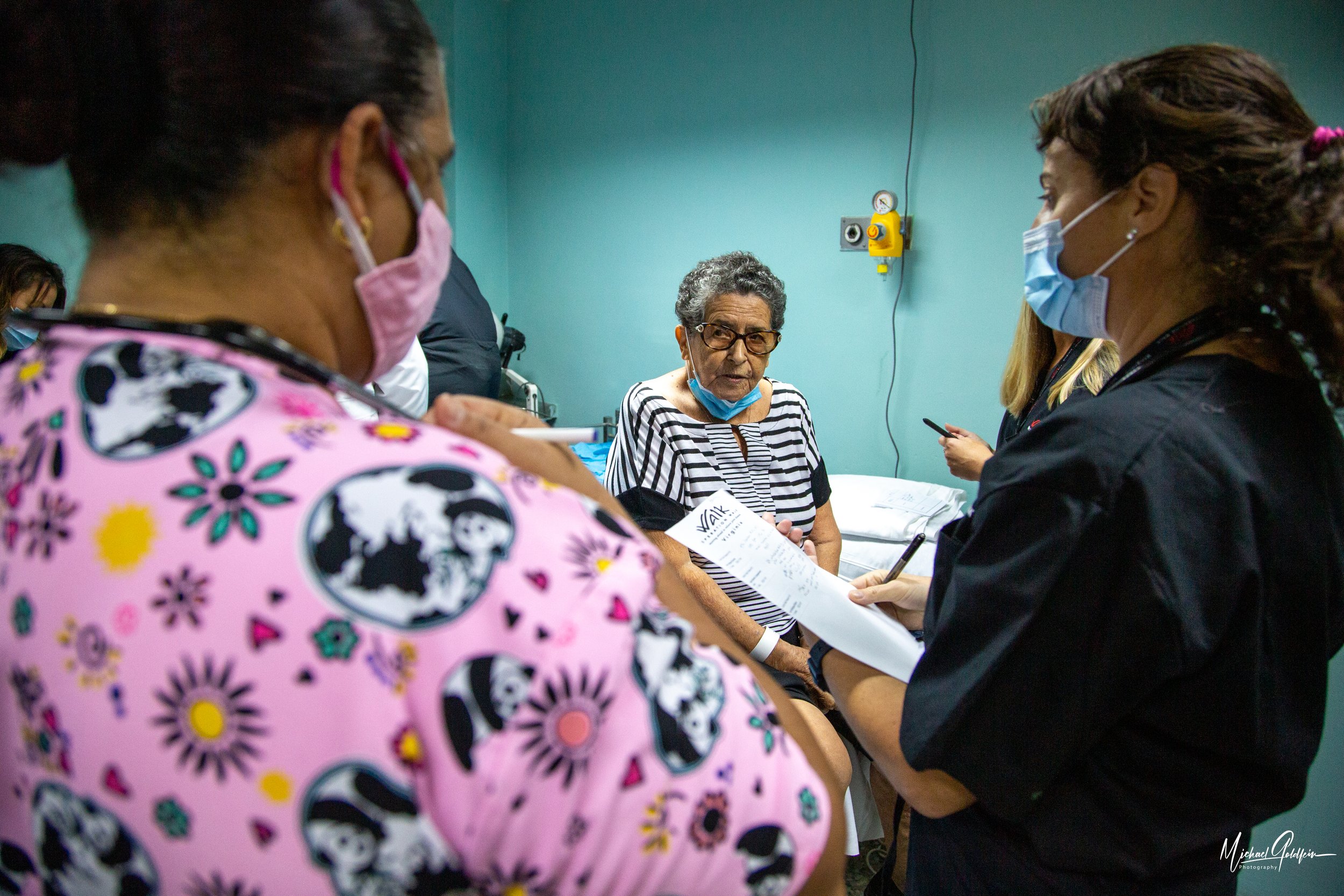
Orthopedic surgery without borders
“Joint replacements are radical, life-changing procedures. Being able to see patients whose lives have been restored - it tells you why you went into medicine in the first place.”
— Dr. Bill Hamilton, Operation Walk Orthopedic Surgeon
Restoring Mobility, Giving Hope
Our team of leading surgeons, physicians, nurses, physical therapists, medical technicians and support staff volunteer their time to provide free joint replacement and rehabilitation services in developing countries where patients have little to no access to medical care. The estimated value of each mission’s donated work & supplies is between $500,000 and $1.5 million.
Operation Walk patients have never known a life where they could walk easily or move around freely.
Their days require a wheelchair or crutches and are marred with the agony of debilitating joint disease. Our volunteer medical team travels the world to give patients the life-changing opportunity to walk.
These patient candidates suffer from advanced arthritis and other degenerative joint diseases that burden them with intense, never-ending pain. For most of them, conducting normal, productive lives is nearly impossible. Many lose their jobs, their families, and the ability to experience the basic joys of life.
With an extraordinary volunteer medical team, donated surgical supplies, and financial contributions, Operation Walk Virginia provides free, desperately needed knee and hip replacement surgeries in developing countries where people have little to no access to healthcare. Our week-long mission trips typically restore the gift of walking to more than fifty patients while educating local healthcare workers in advanced surgical and rehabilitation procedures.
Joint surgeries performed by Operation Walk Virginia are the difference between a person being able to work and being homebound.
Hip and knee replacements are among the most cost-effective medical procedures available, providing pain-free restoration of motion and function. They dramatically relieve suffering while returning patients to active, productive lives.
These procedures replace damaged, rough surfaces of the diseased joint with artificial, fluid, durable implants. Typically, these surgeries restore normal joint function and patients recover rapidly. Most patients are up and walking again in only a couple of days.
Their lives are profoundly impacted by their newfound mobility. It restores independence, increases livelihood, and vastly improves the quality of their lives and overall wellbeing.
Preparing to Succeed
Prior to a mission trip, surgeons, doctors and nurses in host countries screen, evaluate and take x-rays of potential surgical candidates. The test results and patient x-rays are sent to Operation Walk Virginia team members months before a trip so the team can plan and assemble appropriate supplies, including specific sizes of joint implants.
Then, our team lead begins the massive logistical task of coordinating schedules, surgical supplies and transportation for the trip.
Approximately eight tons of supplies are shipped ahead of our team to successfully perform the more than 40 joint replacement surgeries on each one-week mission trip.
Providing all aspects of treatment
-

Surgery
Our complete surgical teams include surgeons, anesthesiologists, interns, physician assistants, physical therapists and other volunteers. Local surgeons, doctors and nurses may join in the operating room and subsequently receive training on the recovery floor.
-

Hospitalization
An Operation Walk surgical procedure involves pre-operative patient education, a two to four day stay in the hospital and typically several weeks of physical therapy.
-

Post-Operative Care
Physical and occupational therapists educate patients and their families on safe rehabilitation techniques. They also train local physical therapists so the healing process for Operation Walk patients is successful long after the surgical team returns to the United States.
The Birth of Operation Walk Virginia
Operation Walk Virginia was born in 2006, the vision of Dr. Jerry Engh and Julie Warner, RN. Since its inception, our volunteer staff has helped more than 700 patients across six countries in Central and South America.
Over his years of dedicated service, Dr. Engh led teams on surgical missions to Nicaragua and Ecuador. Dr. Engh’s unique vision brought doctors from the host country to the United States to learn and observe surgical techniques involved in knee and hip replacement, returning to their own country with skills to help patients for years to come.
Operation Walk Virginia was born from Operation Walk, founded by renowned orthopedic surgeon Dr. Lawrence D. Dorr in Los Angeles in 1996. Dr. Dorr developed its techniques for successful surgical missions in developing countries. These included identifying and building relationships with in-country hospitals and physicians, securing implants and other necessary medical supply donations, building volunteer teams of surgeons, anesthesiologists, nurses, physical therapists and other healthcare professionals, learning how to transport medical equipment across borders and selecting patients in advance to ensure appropriate implants.
Each Operation Walk team secures volunteers with the range of skills needed based on the Operation Walk model and raises its own funds. Operation Walk team leaders in Los Angeles train each new team on how to perform a successful Operation Walk mission, ensuring quality standards and patient care remain consistent across the network.
If you are a medical professional, volunteer to help out on an upcoming mission. Become a valued team member and sponsor one of our missions. Every person can make a difference.
Julia Warner (left) with longtime OpWalk VA volunteer Tracy Woodward
Julia Warner, Founder
“After Dr. Jerry Engh spoke with Larry Dorr about bringing Operation Walk to Virginia, he came back and asked if I would go. I didn’t hesitate a minute. and off we went. The first two trips we had teams from Operation Walk LA accompany us, and after that we were on our own. We had hoped to go to Vietnam. Dr. Engh and I did a whirlwind two day trip to look at hospitals, but the sponsor backed out. We were even asked to go to Mongolia which would have been incredible. Dr. Engh wanted to get an 18-wheeler ‘tricked out’ to do joints in underserved parts of the US, but the legal logistics proved too difficult. I would not trade that sweat and tears for anything in the world.”






